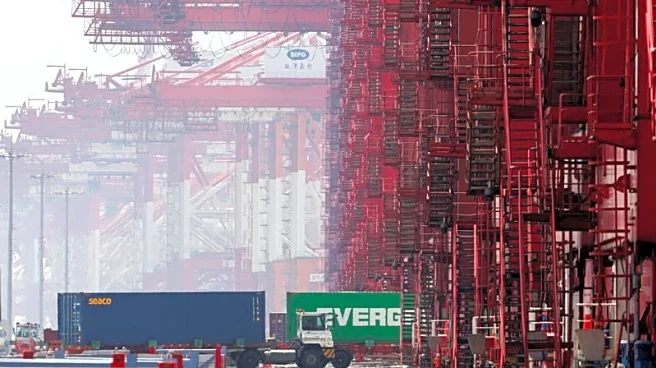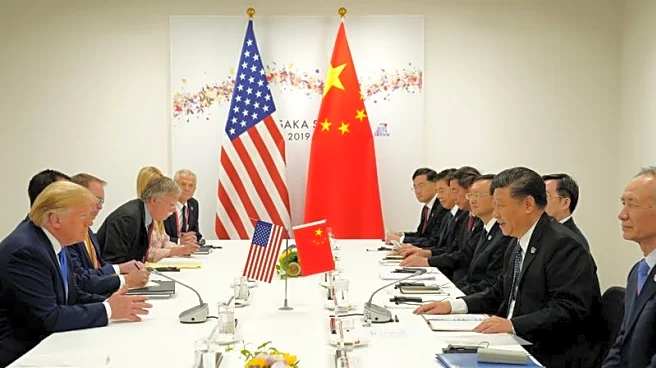What is the story about?
What's Happening?
Chinese factories increased their purchasing activities in September, boosting Asian supply chains to their busiest level since June 2022. This contrasts with North American manufacturers, who reduced activity due to tariff-related disruptions. The GEP Global Supply Chain Volatility Index reported a flat global index score, indicating underutilized supply chain capacity. While Asia saw growth, North America and Europe experienced declines in purchasing and stockpiles, reflecting economic uncertainties and tariff pressures.
Why It's Important?
The divergence in purchasing activities between Chinese and North American factories highlights the ongoing impact of tariffs and economic uncertainties on global supply chains. China's increased purchasing supports production and sales growth, while North America's slowdown reflects challenges in maintaining inventory buffers. This situation underscores the need for supply chain leaders to adapt strategies to navigate the 'new normal' of higher prices and slower growth. The report suggests that global companies must execute revised strategies to manage these challenges effectively.
What's Next?
Supply chain leaders may need to reassess their strategies to address the ongoing pressures of tariffs and economic uncertainties. Companies could explore alternative sourcing options and adjust inventory management practices to mitigate disruptions. The situation may also prompt discussions on trade policies and their impact on global supply chains. As transportation costs remain stable, businesses might focus on optimizing logistics and distribution networks to enhance efficiency and resilience.
Beyond the Headlines
The report highlights the broader implications of tariff pressures and economic uncertainties on global supply chains. It raises questions about the sustainability of current trade practices and the need for strategic adjustments to ensure long-term stability. The situation reflects the complexities of navigating international trade relations and the potential for geopolitical tensions to influence economic decisions. Long-term shifts in supply chain management and trade policies may emerge as companies adapt to the evolving landscape.
AI Generated Content
Do you find this article useful?















